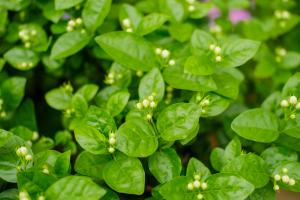How to Plant Coconut Trees in the Philippines
The Philippines is known for its vast coconut tree plantations that make up a significant part of the country's economy. With its tropical climate, planting coconut trees is relatively easy and can be done year-round in most areas. Here’s a beginner's guide on how to plant coconut trees in the Philippines.
Site Selection
The first step in planting coconut trees is to select a suitable site. The ideal area for planting should have a well-draining soil that is rich in organic matter and does not get flooded during rainy seasons. The site should also have access to a good supply of water and receive adequate sunshine to ensure proper growth and development of the coconut trees.
Preparing the Site
Before planting the coconut trees, the site needs to be prepared. Clear the area of any debris, vegetation, or rocks that may hinder the growth of the trees. Ensure that there are no underground utilities or pipes in the area where you plan to plant the trees. Remove any weeds and grass from the planting site, and till the soil to a depth of at least 45 cm to allow the roots to penetrate easily.
Planting the Coconut Trees
Once the site is prepared, you can begin planting the coconut trees. Dig a hole at least 45 cm deep and wide enough to accommodate the root ball of the tree. The spacing between each tree should be at least 6 meters or 20 feet apart to provide enough room for growth. Plant the tree in the center of the hole and fill it with soil, pressing it down firmly to eliminate air pockets. Water the tree generously immediately after planting and make sure the soil around the tree stays moist in the first few weeks.
Maintenance
After planting the coconut trees, it's essential to maintain them to ensure they grow healthy and strong. Regularly water the trees to keep the soil moist, especially during the dry season. Fertilize the trees with a balanced fertilizer every three months to provide them with the nutrients they need to thrive. Prune any dead or diseased parts of the tree regularly to promote healthy growth and prevent the spread of disease.
Harvesting Coconuts
Once the coconut trees mature, they will start producing fruits. To harvest coconuts, wait for the fruit to ripen and begin to mature. The fruits are ready for harvest when they turn brown or yellowish-brown and fall off the tree on their own. Use a long stick or a ladder to reach the top of the tree and collect the fruits. Remove the husk and store the nuts in a dry, cool place until they are ready to be sold or used.
Conclusion
Planting coconut trees in the Philippines can be a profitable venture, and with proper care and maintenance, the trees can grow for up to 80 years. By following the steps outlined above, you can grow and harvest healthy coconut trees that will yield reliable and profitable crops for years to come.

 how many times do yo...
how many times do yo... how many planted tre...
how many planted tre... how many pine trees ...
how many pine trees ... how many pecan trees...
how many pecan trees... how many plants comp...
how many plants comp... how many plants can ...
how many plants can ... how many plants and ...
how many plants and ... how many pepper plan...
how many pepper plan...




























